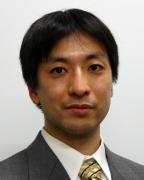Research Experience
-
2020.04-Now
Waseda University Department of Applied Mechanics and Aerospace Engineering, School of Fundamental Science and Engineering, Faculty of Science and Technology Professor (PI)
-
2018.08-2020.07
Ministry of Education, Culture, Sports, Science and Technology (MEXT) Research Promotion Bureau Senior Scientific Research Specialist (Concurrent Post)
-
2019.04-2020.03
Waseda University Department of Applied Mechanics and Aerospace Engineering, School of Fundamental Science and Engineering, Faculty of Science and Technology Professor (PI)
-
2014.04-2019.03
Waseda University Department of Applied Mechanics and Aerospace Engineering, School of Fundamental Science and Engineering, Faculty of Science and Technology Associate Professor (PI)
-
2012.04-2014.03
Waseda University Department of Applied Mechanics and Aerospace Engineering, School of Fundamental Science and Engineering, Faculty of Science and Technology Assistant Professor (PI)
-
2010.06-2012.03
Harvard University School of Engineering and Applied Sciences (SEAS) Postdoctoral Fellow
-
2007.04-2010.06
The University of Tokyo Dept. of Mechano-Informatics, Graduate School of Information Science and Technology Assistant Professor
-
2006.05-2007.03
The University of Tokyo Dept. of Mechano-Informatics, Graduate School of Information Science and Technology Assistant Professor
-
2006.04-
The University of Tokyo Dept. of Mechano-Informatics, Graduate School of Information Science and Technology Technical Assistant
-
2004.04-2006.03
Japan Society for the Promotion Science (JSPS) Research Fellow


Click to view the Scopus page. The data was downloaded from Scopus API in January 05, 2026, via http://api.elsevier.com and http://www.scopus.com .